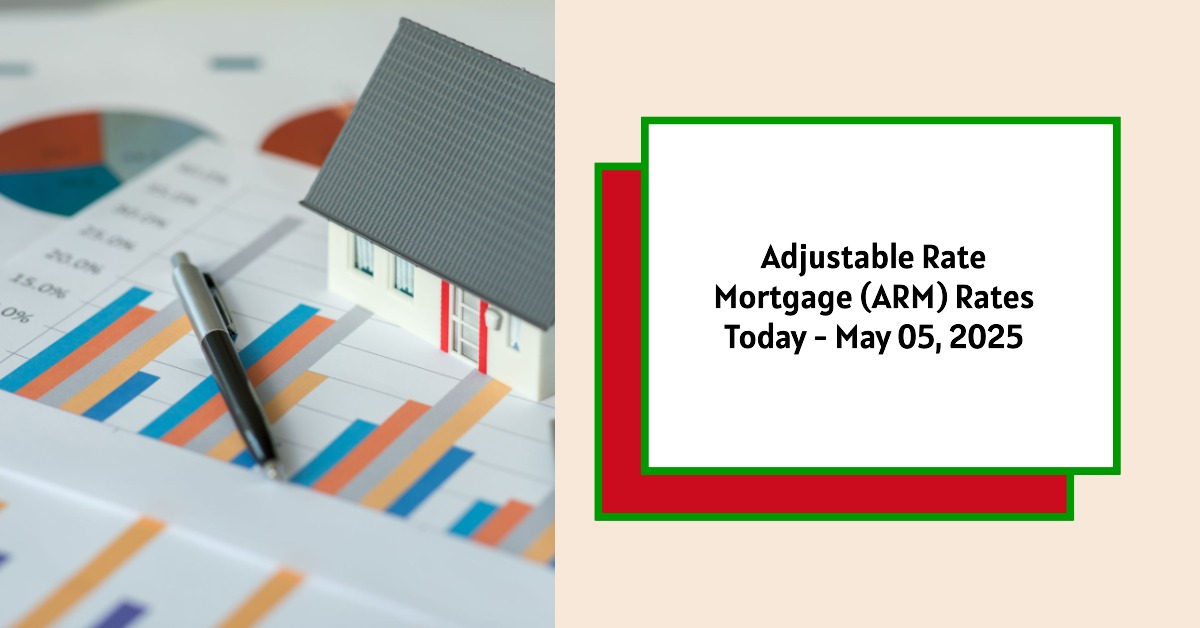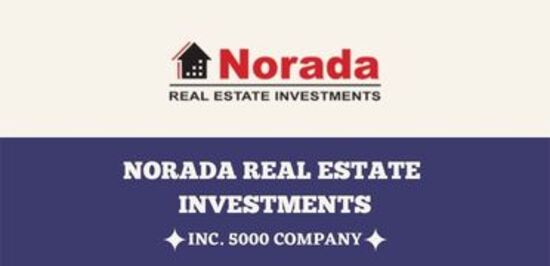If you're considering a home purchase or refinance today, May 05, 2025, you're probably wondering about Adjustable Rate Mortgage (ARM) rates. As of today, the national average 5/1 ARM APR is 6.38%, while the average 10/1 ARM APR sits at 6.56%. While ARMs can offer lower initial rates compared to fixed-rate mortgages, it's crucial to understand how they work before diving in. Let's explore current rates, how to snag the best deal, and whether an ARM is right for you.
Adjustable Rate Mortgage (ARM) Rates Today – May 05, 2025
Buying a house is a big deal, and figuring out mortgages can feel like trying to understand a foreign language. I remember when I bought my first home – I was so overwhelmed by all the different loan options! That's why I want to break down ARMs in a way that's easy to understand.
What are ARMs anyway?
Unlike fixed-rate mortgages, where your interest rate stays the same for the entire loan term, ARMs have an interest rate that can change over time. Here’s the basic idea:
- Initial Fixed Period: For a set number of years (like 3, 5, 7, or 10), your interest rate is locked in.
- Adjustment Period: After the initial period, your interest rate can go up or down based on a benchmark interest rate, like the Prime Rate or the SOFR (Secured Overnight Financing Rate), plus a margin. The margin is a fixed percentage point that the lender adds to the index.
Current ARM Rates: A Snapshot for May 05, 2025
Let's take a look at the average ARM rates as of today (Source: Bankrate):
- 3/1 ARM: 5.88% (Interest Rate), 6.42% (APR)
- 5/1 ARM: 6.20% (Interest Rate), 6.38% (APR)
- 7/1 ARM: 6.39% (Interest Rate), 6.47% (APR)
- 10/1 ARM: 6.67% (Interest Rate), 6.56% (APR)
As you can see, the 5/1 ARM often has one of the lowest initial rates. Also, take note of the APR (Annual Percentage Rate). The APR includes not only the interest rate but also other fees associated with the loan, giving you a more complete picture of the overall cost.
Here’s a quick comparison to other mortgage types:
| Product | Interest Rate | APR |
|---|---|---|
| 3/1 ARM Rate | 5.88% | 6.42% |
| 5/1 ARM Rate | 6.20% | 6.38% |
| 7/1 ARM Rate | 6.39% | 6.47% |
| 10/1 ARM Rate | 6.67% | 6.56% |
| 30-Year Fixed Rate | 6.78% | 6.85% |
| 15-Year Fixed Rate | 5.95% | 6.05% |
| 30-Year Fixed Rate FHA | 6.49% | 6.54% |
| 30-Year Fixed Rate VA | 6.53% | 6.58% |
| 30-Year Fixed Rate Jumbo | 6.80% | 6.85% |
Finding the Best ARM Rate: Your Four-Step Guide
Securing a great ARM rate requires a bit of legwork. Here's my step-by-step guide:
- Shore Up Your Finances: Lenders love borrowers who are low-risk.
- Credit Score: Aim for a very good credit score (740 or higher). A higher score signals to lenders that you are responsible with credit.
- Debt-to-Income (DTI) Ratio: Keep this as low as possible. DTI is your monthly debt payments divided by your gross monthly income.
- Down Payment: A larger down payment reduces the lender's risk and can lead to a lower rate. 20% is often considered ideal to avoid private mortgage insurance (PMI).
- Set Your Budget: Determine how much house you can realistically afford. Don't just focus on the initial low payment of an ARM. Use an adjustable-rate calculator to see how your payments might change when the rate adjusts.
- Explore Different ARM Types:
- Consider various ARMs (3/1, 5/1, 7/1, 10/1) to see which fixed-rate period fits your timeline.
- Remember, longer fixed-rate periods usually come with higher initial rates, but they offer more stability.
- Shop Around: Get quotes from at least three different lenders. Pay close attention to:
- Interest Rate: The base rate you'll be charged.
- Fees: Origination fees, appraisal fees, etc.
- Rate Cap Structure: Understand how high your rate can potentially climb over the life of the loan. This is crucial for budgeting.
ARM Loan Types: Picking the Right One for You
Let's delve into the different types of ARMs you'll encounter:
- 3/1 ARM (or 3/6 ARM): Fixed rate for three years, then adjusts every year (or every six months).
- 5/1 ARM (or 5/6 ARM): Fixed rate for five years, then adjusts every year (or every six months). This is one of the most popular ARM options.
- 7/1 ARM (or 7/6 ARM): Fixed rate for seven years, then adjusts every year (or every six months).
- 10/1 ARM (or 10/6 ARM): Fixed rate for ten years, then adjusts every year (or every six months).
ARM Loan Requirements: What You'll Need
Getting approved for an ARM often involves stricter requirements than fixed-rate mortgages. Lenders need to be confident you can handle potentially higher payments.
- Loan Amount: In 2025, the conforming loan limit is $806,500 in most areas. If you need a larger loan, you'll be looking at a jumbo ARM, which can be tougher to qualify for.
- Credit and Income: Expect lenders to scrutinize your credit score and income. They want to see a solid history of responsible borrowing.
- Down Payment: Most conventional ARMs require at least a 5% down payment. However, putting down more can improve your chances of approval and potentially lower your rate.
Is an ARM Right for You? Weighing the Pros and Cons
Now for the big question: Should you get an ARM? It really depends on your individual circumstances.
When an ARM Might Be a Good Idea:
- Lower Initial Rate: You want to take advantage of a significantly lower APR compared to a fixed-rate mortgage.
- Short-Term Homeownership: You plan to move or refinance before the initial fixed-rate period ends.
- Comfort with Risk: You're comfortable with the possibility of your interest rate and monthly payment increasing in the future.
The Pros of ARMs:
- Lower Initial Payments: Frees up cash for other financial goals.
- Investment Opportunity: You could invest the savings from the lower monthly payments.
- Potential Savings: If you move before the rate adjusts, you could save a lot on interest.
The Cons of ARMs:
- Rate Risk: Interest rates could rise substantially, even with rate caps.
- Budgeting Challenges: Your monthly payment could fluctuate, making long-term financial planning difficult.
ARM Loan FAQs
- What is an adjustable-rate mortgage and how does it work? An ARM has a fixed interest rate for an initial period, after which the rate can adjust based on market conditions.
- Should I choose an ARM or fixed-rate mortgage? Consider your financial situation, risk tolerance, and how long you plan to stay in the home.
- Do ARM loans have a rate cap? Yes, ARMs typically have rate caps that limit how much the interest rate can increase during each adjustment period and over the life of the loan.
Final Thoughts: Making an Informed Decision
ARMs can be a great option for certain homebuyers, but it's crucial to understand the risks and benefits before making a decision. Take the time to shop around, compare offers, and consult with a mortgage professional. Doing your homework will help you find the right mortgage for your needs and budget. Remember, buying a home is a marathon, not a sprint!
“Turnkey Real Estate Investment With Norada”
With adjustable-rate mortgages (ARMs) averaging 6.20%, savvy investors are exploring flexible financing options to maximize returns.
Norada offers a curated selection of ready-to-rent properties in top markets, helping you capitalize on current mortgage trends and build long-term wealth.
HOT NEW LISTINGS JUST ADDED!
Connect with an investment counselor today (No Obligation):
(800) 611-3060
Also Read:
- Will Mortgage Rates Go Down in 2025: Morgan Stanley's Forecast
- Expect High Mortgage Rates Until 2026: Fannie Mae's 2-Year Forecast
- Mortgage Rate Predictions 2025 from 4 Leading Housing Experts
- Mortgage Rates Forecast for the Next 3 Years: 2025 to 2027
- 30-Year Mortgage Rate Forecast for the Next 5 Years
- 15-Year Mortgage Rate Forecast for the Next 5 Years
- Why Are Mortgage Rates Going Up in 2025: Will Rates Drop?
- Why Are Mortgage Rates So High and Predictions for 2025
- Will Mortgage Rates Ever Be 3% Again in the Future?
- Mortgage Rates Predictions for Next 2 Years
- Mortgage Rate Predictions for Next 5 Years
- Mortgage Rate Predictions: Why 2% and 3% Rates are Out of Reach
- How Lower Mortgage Rates Can Save You Thousands?
- How to Get a Low Mortgage Interest Rate?
- Will Mortgage Rates Ever Be 4% Again?



